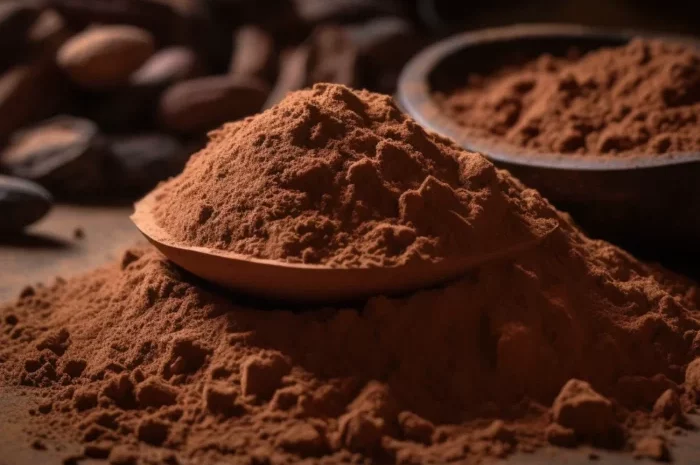Cocoa powder is a staple ingredient in many baked goods, adding rich flavor and depth to cakes, brownies, and cookies. However, there’s a persistent belief among some bakers that using cocoa powder in cake recipes can result in a dry, crumbly texture. This notion has led to debates in the baking community, with some swearing by cocoa powder’s ability to enhance moisture and others cautioning against its supposed drying effects. In this article, we’ll delve into the science behind cocoa powder in baking and explore whether it truly has a detrimental impact on cake moisture.
Understanding Cocoa Powder
Cocoa powder is derived from cocoa beans, which are the seeds of the cacao tree. After harvesting, the beans undergo fermentation, drying, and roasting processes before being ground into a fine powder. There are two main types of cocoa powder: natural and Dutch-processed (alkalized).
Natural cocoa powder is acidic and has a slightly bitter taste, while Dutch-processed cocoa powder is treated with an alkalizing agent to neutralize its acidity, resulting in a milder flavor. Both types of cocoa powder are commonly used in baking, with each offering unique characteristics to finished products.
The Role of Cocoa Powder in Cake Baking
Cocoa powder serves multiple purposes in cake recipes. Beyond imparting chocolate flavor, it contributes to the color, texture, and structure of the cake. Cocoa powder contains starches, proteins, and fats, all of which interact with other ingredients during mixing and baking.
One of the primary functions of cocoa powder is to absorb moisture. Like flour, cocoa powder can bind with water or other liquids in the batter, helping to create a cohesive structure. However, excessive absorption of moisture can potentially lead to a dry or crumbly texture in the finished cake.
Moisture Management in Cake Batter
Achieving the perfect moisture balance in cake batter is crucial for producing a moist and tender cake. Several factors influence moisture retention in baked goods, including the proportion of liquid ingredients, the type of fats used, the presence of sugar, and the interaction between dry and wet ingredients.
When cocoa powder is incorporated into cake batter, it competes with other dry ingredients, such as flour, for moisture. If the cocoa powder absorbs too much liquid, it can leave less moisture available to hydrate the flour and other ingredients properly, resulting in a dry cake. However, this outcome is not solely attributable to cocoa powder but rather to the overall formulation and baking process.
Recipe Adjustments for Moisture Control
To prevent dryness in cocoa powder-based cakes, bakers can employ various strategies to optimize moisture retention:
1. Adjusting Liquid Content: Increasing the amount of liquid ingredients, such as milk, water, or oil, can help compensate for moisture loss caused by cocoa powder. However, it’s essential to maintain the proper balance of wet and dry ingredients to avoid overly dense or soggy cakes.
2. Choosing the Right Fat: Using fats with higher moisture content, such as vegetable oil or melted butter, can enhance the moistness of the cake. These fats coat the flour particles, inhibiting gluten formation and promoting tenderness.
3. Incorporating Moist Ingredients: Adding ingredients like sour cream, yogurt, or mashed bananas can contribute additional moisture and richness to the cake batter. These ingredients also contain water, which helps keep the cake moist during baking.
4. Sifting Dry Ingredients: Sifting cocoa powder and flour before adding them to the batter can help aerate the ingredients and prevent clumping. This ensures more even distribution of cocoa powder throughout the batter, minimizing the risk of dry spots.
5. Avoiding Overmixing: Overmixing the batter can lead to gluten development, resulting in a tougher texture. Mixing until just combined helps prevent excessive moisture loss and maintains the cake’s tenderness.
By making these adjustments, bakers can mitigate the potential drying effects of cocoa powder and produce cakes that are moist, flavorful, and perfectly textured.
Conclusion
Contrary to the belief that cocoa powder inherently makes cakes dry, the key to moist and delicious cocoa powder-based cakes lies in careful recipe formulation and moisture management. While cocoa powder does have the capacity to absorb moisture, its impact on cake texture is influenced by various factors, including recipe proportions, ingredient selection, and baking techniques.
By understanding the role of cocoa powder in baking and implementing appropriate adjustments, bakers can confidently incorporate this versatile ingredient into their cake recipes without sacrificing moisture or flavor. With a balance of science and culinary intuition, cocoa powder can elevate cakes to new heights of decadence and indulgence, dispelling the myth of its drying effects once and for all.
Related Topics:
What Makes Italian Mascarpone Cheese Truly Exceptional

























